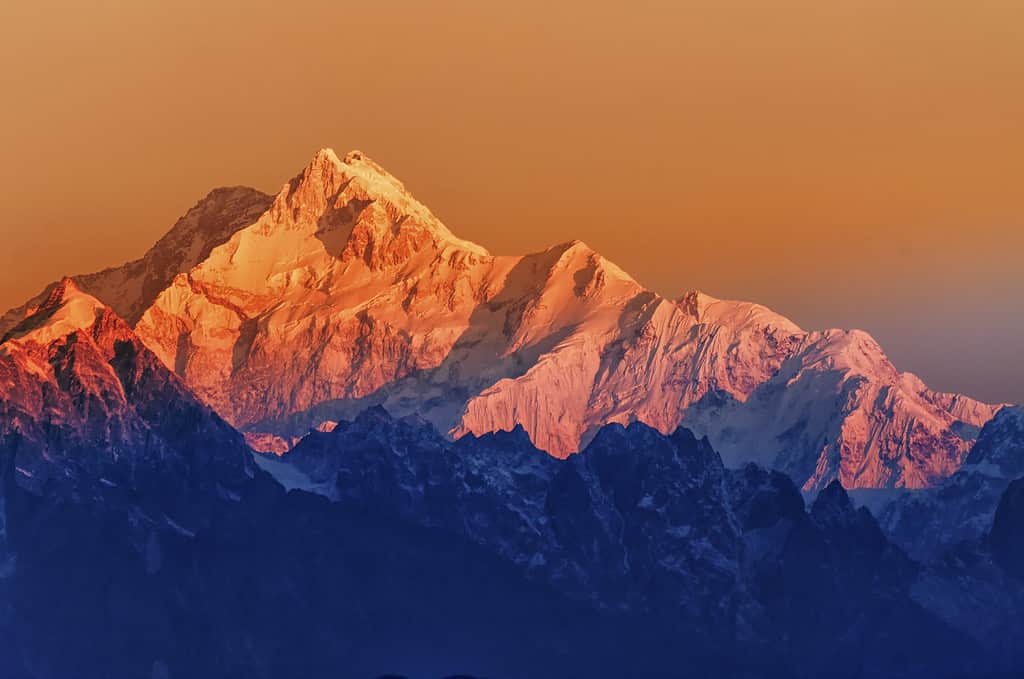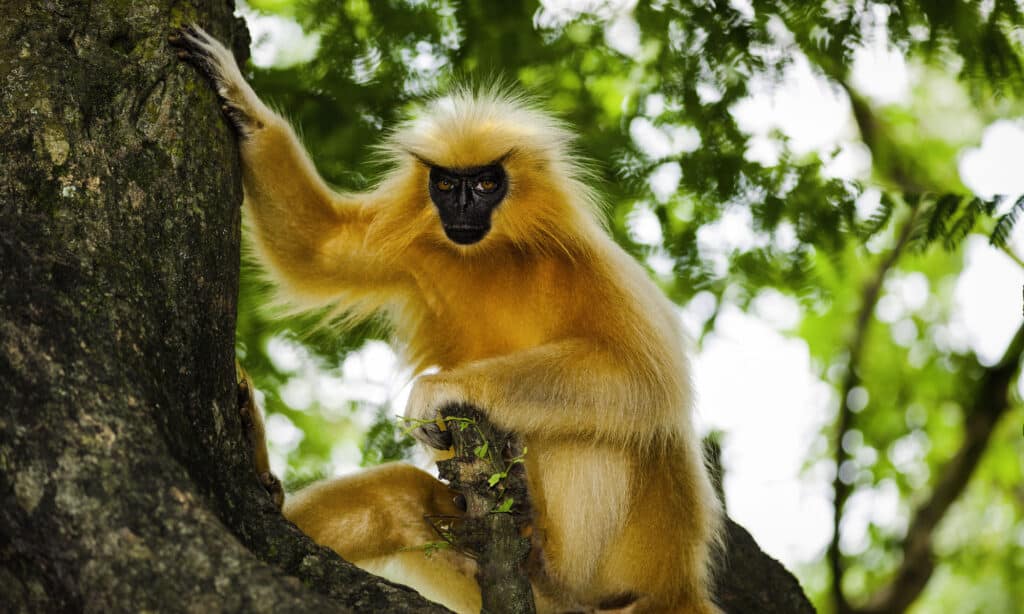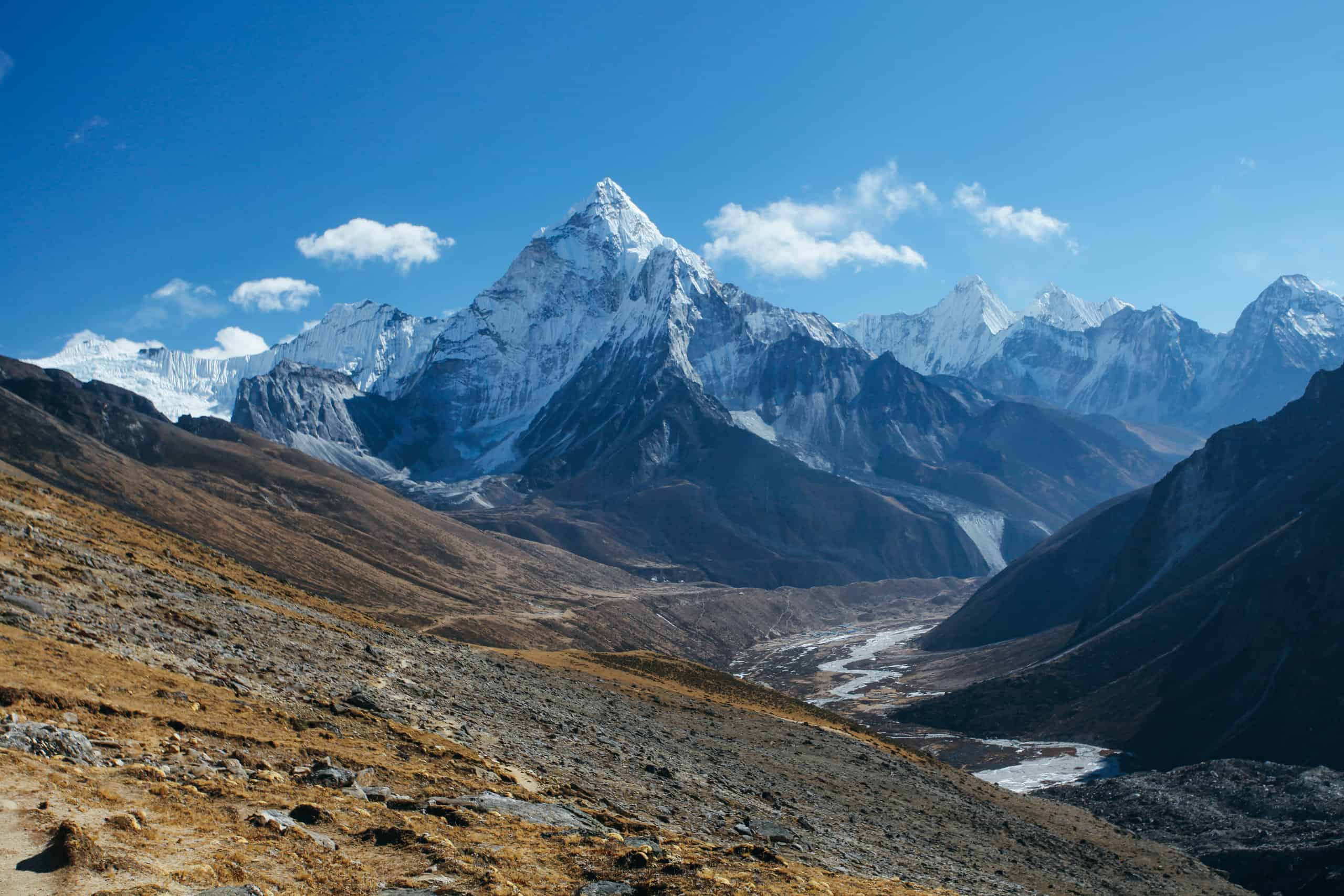A massive landmark with an unfathomable presence erupts from the Earth’s crust, against a picturesque, colorful, cloud-filled sky. This is the Himalayas; a mountain range that soars to the skies and defies gravity with its breathtaking majesty. The Himalayas are located in the center of South Asia and have a heavenly appearance that draws tourists, poets, and dreamers into its ethereal embrace.
But how exactly were these magnificent mountains created? How were their massive peaks and colossal size formed? In this guide, we’ll take a look at everything you need to know about the Himalayas, from their origins to the wildlife that graces these mountains. You might just be surprised by how these incredible mountains were actually formed!
What are the Himalayas?
South Asia is home to the beautiful Himalayan Mountains. The mountains span a number of nations, including Pakistan, Tibet, India, Nepal, and Bhutan. These towering mountains are a singular and amazing natural phenomenon because of their incredible height and breathtaking beauty.
The Indian plate and the Eurasian plate collided to generate the huge network of interconnecting peaks and ridges that make up the Himalayan Mountains. These plates have been steadily moving against one another for millions of years, which has caused the Earth’s crust to shift higher and fold. The Himalayas were created by this process known as tectonic activity.
The Himalayas are well-known for their impressive heights. In fact, this mountain range is proudly home to Mount Everest, the tallest peak in the world. A remarkable wonder of nature, Mount Everest rises to an astounding 29,029 feet above sea level. The Himalayas are more than simply Mount Everest, though. They are home to a large number of other magnificent peaks, each with its own distinct beauty and fascination, including Kanchenjunga, Makalu, and Annapurna.

Kanchenjunga (pictured) is just one of the many beautiful mountains that make up the Himalayan Mountain Range.
©iStock.com/RNMitra
Himalayan Mountains Environment and Region
These mountains are located in a remarkably varied geographical region. The Himalayas’ length of over 1,500 miles results in a diverse array of habitats and landforms. The Himalayas provide a tapestry of spectacular views, from dense forests and vivid meadows to frigid glaciers and snow-capped summits. The range is also home to a staggering diversity of plant and animal species, numbering in the thousands. But we’ll dive into wildlife later on in this guide.
The cultural and spiritual importance of the Himalayas is one of its most unique features. For countless years, the mountains have served as a source of devotion and inspiration. The area has a rich cultural past, with many different ethnic tribes coexisting peacefully with the mountains. There are several sacred spots and monasteries that serve as places of prayer and spiritual solace in the Himalayan Mountains. Many people travel on pilgrimages to these holy places in order to find comfort and enlightenment among the mountains’ tranquil and breathtaking settings.
Himalayan Mountains Geography
The Himalayas have a significant impact on the topography and climate of the surrounding areas. By serving as a barrier, they prevent the cold winds from Central Asia from blowing onto the Indian subcontinent, resulting in distinctive weather patterns. The Ganges, Indus, and Brahmaputra rivers provide water for agriculture and support the lives of millions of people downstream. These rivers are born from the melting snow and glaciers of the Himalayan Mountains.
When and How the Himalayas Were Formed
The Himalayas are believed to have started forming roughly 40 to 50 million years ago. Specifically, it is believed that the mountains started forming during the Paleogene Period of the Cenozoic Era. These magnificent mountains were raised and created as a result of the collision of the Indian subcontinent with the Eurasian tectonic plate. The Tethys Sea, which originally divided the Indian subcontinent from Eurasia, was closed as the once-independent landmass migrated slowly north. The enormous pressures of tectonic convergence caused the Earth’s crust to fold, fault, and lift when the Indian subcontinent and Eurasia met, creating the Himalayan Mountain range.
Because of the continual convergence of these two tectonic plates, the Himalayas are still undergoing orogeny or the process of creating mountains. The Himalayas are still expanding and rising as a result of the Indian plate’s movement pushing up on the Eurasian tectonic plate. The range’s extraordinary height and geological diversity are the results of this rapid tectonic activity that is still ongoing.
The Himalayas’ present shape of towering peaks, deep valleys, and glaciated landscapes is the result of millions of years of tectonic action, erosion, and weathering. Because the tectonic plates are continually moving, the area is still seismically active and occasionally experiences earthquakes and land movements.
The geological history of the Himalayas is proof of the planet’s dynamic character. These mountains serve as a physical illustration of the forces and processes that have shaped our planet over extremely long periods of time.
Wildlife Found in the Himalayas
The Himalayan Mountains are home to a wide variety of species because of their diversified ecosystems and distinctive habitats. The area is teeming with diverse animal species, from secretive snow leopards to vibrant pheasants. Let’s take a look at a few different animals that live in the Himalayan Mountains.
Snow Leopard
Classification: Panthera uncia
The majestic and elusive snow leopard is a large cat that lives in the high elevations of the Himalayan Mountains. The snow leopard has exceptional camouflage and thick fur, making it an ideal fit for its arid alpine environment. India, Nepal, Bhutan, Tibet, and Pakistan are the main locations where these animals can be found.
Alpine meadows, rocky outcrops, and valleys are all within the snow leopard’s range, which is usually between 9,800 and 14,800 feet above sea level. Due to their strong frame and well-developed rear limbs, these nimble cats are famous for their skill in navigating hazardous terrain.
Snow leopards are very elusive and difficult to spot in the wild. Their stunning fur is smoky-gray with black rosettes and patches, and it serves as good protection against the cold. They are exceedingly hard to even see, even up close, thanks to their complex camouflage that allows them to blend in with their icy environment.
Threats to the severely endangered snow leopard include habitat degradation, poaching, and conflicts between people and wildlife. Local communities and conservation groups work together to save their vulnerable environments and advance conservation programs.

The snow leopard (pictured) is severely endangered animals that live in the Himalayas.
©abzerit/Shutterstock.com
Himalayan Musk Deer
Classification: Moschus chrysogaster
Another rare and intriguing animal that may be found in the Himalayan Mountains is the Himalayan musk deer. Due to its musk-producing glands, this small and solitary deer is sought after for poaching and illegal hunting.
The Himalayan musk deer lives predominantly between 8,200 and 14,100 feet above sea level in the mountains’ thick forests and alpine areas. They may be found in regions with dense plant cover, such as coniferous woods and shrublands, and are well suited to rocky terrain.
The Himalayan musk deer is known for its diminutive size. Males normally weigh between 24 and 40 pounds, while females often weigh a little less. They have long and thin legs, a gray-brown coat, and huge ears. The musk gland is found in the male’s belly and generates a pungent chemical used to make fragrances and traditional medicine.
The Himalayan musk deer is considered to be an endangered species as a result of habitat degradation, poaching for its musk glands, and unlawful hunting. To preserve this rare and priceless species in the Himalayan Mountains, conservation measures are being made to safeguard their habitats and fight poaching.
Red Panda
Classification: Ailurus fulgens
The Himalayan Mountains are home to the charming red panda. The red panda is not closely related to the giant panda, despite its name. It is a special animal with distinctive traits all its own.
The eastern Himalayas are home to red pandas, which may be found in Nepal, Bhutan, India, and China. They favor densely vegetated, chilly, temperate woods, particularly those with bamboo. The bamboo plant is an important component of their diet.
These little creatures have a distinctive look. They have bushy tails, reddish-brown fur, and a mask over their face with white markings around the eyes. Their coloring aids in their incorporation with the surrounding vegetation. Red pandas are also adept climbers. They have semi-retractable claws and a unique ankle joint that makes it easy for them to move about in trees.
Unfortunately, habitat degradation and poaching have led to the red panda’s designation as an endangered species. You might be noticing a pattern here with this list of wildlife. To safeguard their survival in the Himalayan Mountains, conservation measures are being made to save their habitats, increase awareness, and preserve them.
Asiatic Black Bear
Classification: Ursus thibetanus
The Himalayan Mountains are home to the magnificent and formidable Asiatic black bear. It is characterized by its glossy black hair and a prominent V-shaped pattern on its chest. It is also known as the moon bear.
In the Himalayan Mountains, Asiatic black bears may be found in nations like India, Nepal, Bhutan, Tibet, and Pakistan. They are adaptive animals that can live in a variety of wooded environments, from lowland forests to those at higher altitudes. These bears are well-built, with powerful forelimbs and pointed claws that help them climb trees and hunt for food. Their varied diet of plants, fruits, nuts, insects, and even small animals makes up their omnivorous diet.
As seed dispersers and participants in the cycle of nutrients, Asiatic black bears are essential to the ecology of the Himalayan Mountains. They are also renowned for their activity known as “tree-marking,” in which they scratch and bite trees and leave behind distinctive odors and markings.
Habitat degradation, poaching, and conflicts between people and these bears are putting the Asiatic black bear in danger. To protect their numbers and maintain their natural habitats in the Himalayan Mountains, conservation activities are crucial.
Golden Langur
Classification: Trachypithecus geei
The Himalayan Mountains are home to the fascinating and critically endangered golden langur monkey species. Its magnificent golden fur, which sets it apart from other langur species, gave rise to its name.
The northeastern Indian states of Assam and Arunachal Pradesh are the main habitats for golden langurs. They live in the lowland and hilly woods in the foothills of the Himalayan Mountains, swinging from one tree to the next while foraging on flowers, fruits, and leaves.
The unusual look of these monkeys is what makes them unique. Infant golden langurs are born with brilliant orange fur that progressively becomes gold as they age. Adult golden langurs have long, golden-yellow fur. They have long tails, expressive features, and a lean frame.
Some local populations revere the golden langur, and cultural traditions preserve them. However, habitat degradation and illegal hunting continue to pose a threat to it. To secure the survival of this spectacular primate species in the Himalayan Mountains, conservation activities are essential.

The golden langur (pictured) is revered by local cultures, though it is facing threats in the form of habitat degradation and illegal hunting.
©Daniel J. Rao/Shutterstock.com
Himalayan Tahr
Classification: Hemitragus jemlahicus
The Himalayan Mountains are home to the fascinating mountain-dwelling ungulate species known as the Himalayan tahr. The Himalayan tahr is an eye-catching animal that lives in the region’s rough terrain and has an outstanding set of curving horns.
The high-altitude areas of the Himalayas, including India, Nepal, Bhutan, and Tibet, are where you may see Himalayan tahrs most often. They can easily cross difficult terrain thanks to their powerful hooves and firm footing. They are well adapted to the rocky cliffs and steep slopes.
Males of these creatures are bigger than females, and they have a stocky physique. They have a thick, coarse coat that insulates them from the chilly alpine air. Tahrs with big, curving horns are males, while those with smaller, more slender horns are females.
The main food sources for Himalayan tahrs are grasses, herbs, and bushes. They have a keen awareness of their surroundings and live in tiny herds, which aids them in spotting possible dangers. The Himalayan tahr still has some conservation issues because of habitat degradation and poaching, despite being classified as a near-threatened species at the moment.
Himalayan Griffon
Classification: Gyps himalayensis
The beautiful and sizable Himalayan griffon is a type of vulture that lives in the Himalayan Mountains. The Himalayan griffon is one of the biggest vultures in the world. It is essential to the environment because it scavenges and cleans up dead animals.
These majestic birds may be seen soaring over the untamed mountain ranges of India, Nepal, Bhutan, and Tibet in the high-elevation areas of the Himalayas. They have a wide range and are found across Central and South Asia.
The Himalayan griffon is a majestic bird with a wingspan that may reach over 10 feet. They have striking white neck ruffs and dark brown feathers. They can rip through corpses for food with the use of their hooked beaks and strong talons.
The Himalayan griffon performs an important ecological function in halting the spread of illness by eating animal remains, despite the fact that its main diet consists of carrion. Their population is seriously threatened by habitat loss and reduced food supply. Protecting the Himalayan griffon and preserving the sensitive ecology in the Himalayan Mountains requires serious conservation measures.
When it comes down to it, the Himalayan Mountains are an absolutely stunning example of the Earth’s ability to create incredible, massive natural landmarks. Unfortunately, much of Himalayan wildlife faces endangerment, so it’s vital that we protect these mountains through solid conservation efforts.
Thank you for reading! Have some feedback for us? Contact the AZ Animals editorial team.








